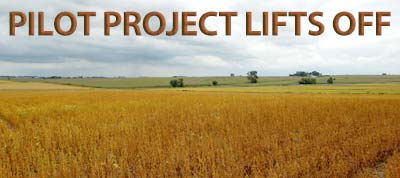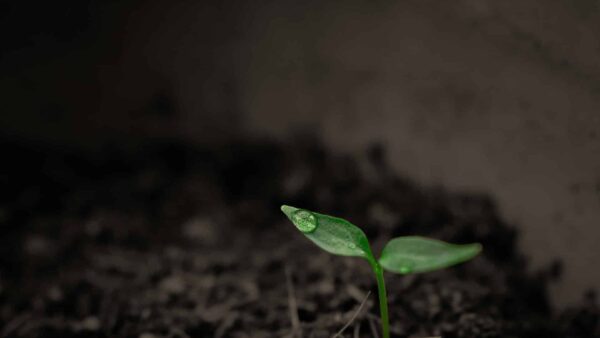
Efficiency is the watchword of the Canadian Food Inspection Agency’s new pilot project for certified soybean seed crop inspections, currently underway in the Chatham and London, Ont. areas. The project, guided by the Seed Industry-Government Working Group comprised of the CFIA, the Canadian Seed Growers’ Association, the Canadian Seed Institute and the Canadian Seed Trade Association, authorizes trained private crop inspectors—from 20/20 Seed Labs and Pioneer Hi-Bred Production—to inspect Certified soybean seed crops.
After crops are evaluated, crop inspectors will file reports with the CFIA, which will then review the reports before sending them to the growers. Most of the crop inspections were completed in October and the Seed IGWG has been seeking feedback from the growers involved with the project, and will put the results through an extensive review process involving each of the members of the Seed IGWG.
“Our fields were completed mid-October and the growers have been completing a CSGA survey that we have been submitting with our inspection reports once we have been authorized by CPIA to issue the reports,” explains Kevin Zaychuk, business development manager for 20/20.
It’s a very involved process, but one that is designed with improved efficiency as an end goal. “Soybean crops have always been inspected by CFIA staff, some of them seasonal,” explains Dale Adolphe, executive director of the CSGA. “The difference here is that instead of training seasonal CFIA people, they are training company people.”
Training to become licensed to inspect certified crops is extensive. According to Louise Duke, who is in CFIA’s Seed Section, for official crop inspectors, the classroom training takes about four days because of the range of crops inspectors need to be trained for. “It’s getting harder for CFIA to hire seasonal inspection staff. It comes down to whether there are more efficient and effective ways of doing things—efficient in terms of cost, and effective in terms of quality,” says Adolphe.
With the soybean pilot project, the soybean inspectors only need to train in the classroom for one and a half days because they only need to be trained to inspect one species—saving time and money.
If all goes well with the pilot project, Certified soybean seed crop inspection may look different in the future. But for the present, the CFIA is still responsible for inspecting all soybean crops not involved in the project.
On the Ground
The pilot project comes on the heels of an announcement last year that the CFIA wants to explore options for changing the seed crop inspection process in Canada. All working group members are now committed to seeking a plan that improves service delivery and maximizes effectiveness of seed certification in all crops.
It’s too early to say how the pilot project is proceeding; inspections may not be completed until sometime in November, and the project’s analysis will take place through the winter. The results themselves will not be released until next spring—the CFIA says March, but Adolphe’s best estimate is April or May.
The project is behind because of inclement weather starting back at planting, and fall has been a rainy season until recently, making it difficult to get the inspection process started, according to Pioneer Hi-Bred Production support manager Barbara Cowan. “Rain made it hard for the beans to dry down,” she says. “But we had everything in place—it just took some dry weather to get us started.”
Pioneer Hi-Bred Production and 20/20 Seed Labs are fully prepared to implement the project on the ground. Five Pioneer employees and two 20/20 Seed Labs staff members have been licensed by the CFIA to perform inspections; all of the licensed inspectors have completed both written and practical exams required by the CFIA. But apart from training, the companies’ responsibilities under the pilot are entirely separate. 20/20 Seed Labs has been assigned 18 seed growers, and Pioneer is performing inspections on one-third of their own soybean growers’ fields. After the pilot is completed, the project results will be analyzed by the Seed IGWG.
In the usual course of events, once they have completed an inspection, 20/20 immediately issues results to growers, but due to the extensive review process required for the pilot project, reports may be slow in coming, says Zaychuk, one of the licensed inspectors for 20/20. “The CFIA are reviewing all of our reports before we are allowed to forward them to the growers, which causes a slight delay for the growers depending on how long it takes for the review to be completed,” he explains.
Future Payoff?
Despite the expected delays in the pilot, Zaychuk sees several future benefits to the new soybean seed crop inspection arrangement, not least of which is the increased efficiency 20/20 will bring to the process, both in terms of the inspection service itself and communication with growers. 20/20 can provide extra information directly to the grower as the inspection process is underway, Zaychuk says—information that is, in his estimation, “over and above what the CSGA requires for seed certification purposes and may include specific information required by the seed grower’s customer. This could vary from grower to grower but may include reporting on specific weeds, crop diseases, plant density or other important agronomic factors.”
Cowan also sees a benefit for Pioneer and its seed growers. “We would be able to combine all inspection needs into one inspection with a few modifications to meet the CFIA, CSGA and our quality plan parameters at the same time,” she says. “This would alleviate most of the confusion growers experience caused by having different inspectors in the field.”
Another reality is that fees for crop inspections might be increasing for growers in the future, but Duke says the fee increases do not come from the new arrangement but rather the current review of CFIA’s service standards and cost recovery. “It is likely that the prices will increase,” says Duke. “The costs of conducting inspections have gone up since the last review was done due to inflation and fuel prices. But I have no way of predicting how much fees will be for growers. At this point, my hoped-for outcome is to gather enough information to point us in some future direction.”
Ultimately, what everyone invested in the project hopes for is a system that not only saves money overall, but actually works—and benefits all parties and, eventually, all crops. “Efficiencies have got to be seen as a benefit to everyone,” says Adolphe. “And effectiveness ensures quality. We’ve got to have a balancing act between efficiency and effectiveness and make sure nobody in the industry is hurt, that there are benefits for everyone. That’s not an easy thing.
“I don’t think anybody should get too excited that the pilot project will result in changes—but not too pessimistic either that it won’t result in positive changes. It’s too early to know. It’s been a process that took longer than expected, but we’re learning as we go along,” he says.
Julienne Isaacs













